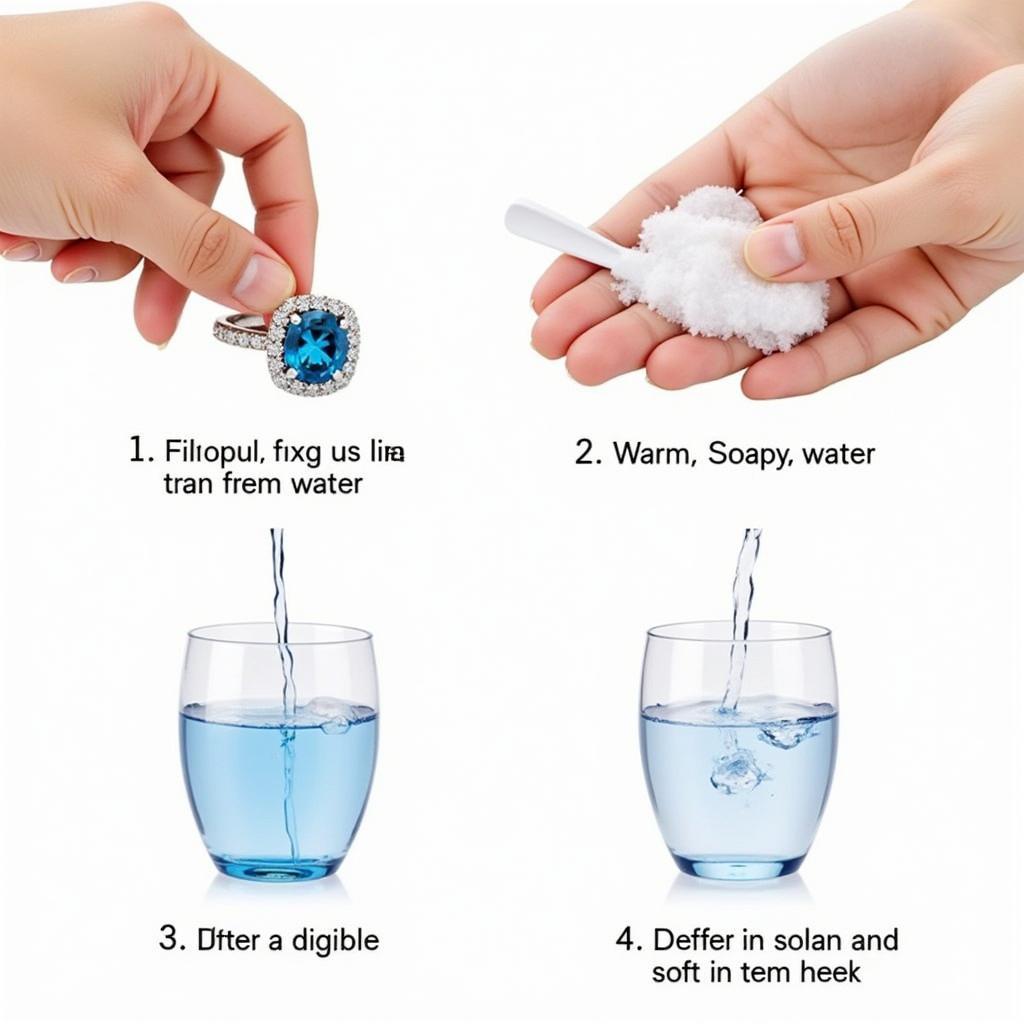Blue zircon is a captivating gemstone known for its brilliant sparkle and vibrant hues. But what color is blue zircon, exactly? While “blue” seems straightforward, the reality is far more nuanced and fascinating.
The color of blue zircon ranges from a delicate pastel sky blue to a deep, rich ocean blue, sometimes even bordering on teal or greenish-blue. The most prized and sought-after color is a vivid, pure blue, often compared to the mesmerizing hue of a fine sapphire. This vibrant blue is often achieved through heat treatment, a common practice that enhances the color of many gemstones. Natural, untreated blue zircon is typically a lighter shade, sometimes with a greyish or greenish undertone.
Unveiling the Spectrum of Blue Zircon
The beautiful blue color of most zircon gemstones isn’t entirely natural. Most blue zircons start out brown or reddish-brown and undergo a heat treatment process to achieve their dazzling blue. This process involves heating the rough stones to extremely high temperatures, sometimes exceeding 1000 degrees Celsius, in a controlled environment. This alters the trace elements within the zircon, resulting in the characteristic blue hue. The intensity and specific shade of blue depend on factors such as the origin of the rough stone, the temperature and duration of the heat treatment, and the presence of other trace elements.
 Various Shades of Blue Zircon
Various Shades of Blue Zircon
Is All Blue Zircon Heat Treated?
While the vast majority of blue zircon available on the market is heat treated, it’s important to note that not all blue zircon undergoes this process. A small percentage of blue zircon occurs naturally, exhibiting a delicate, often lighter blue than their treated counterparts. These naturally blue zircons are highly prized by collectors and connoisseurs due to their rarity and untouched beauty. Identifying a naturally blue zircon requires expert gemological analysis, as the visual differences between treated and untreated stones can be subtle. Similar to what is the color of sagittarius birthstone, blue zircon can also vary in intensity and hue based on origin and other factors.
How to Identify a Blue Zircon
Beyond its color, several characteristics help identify a blue zircon. Its high refractive index gives it exceptional brilliance and fire, creating a dazzling sparkle that rivals that of a diamond. Zircon also exhibits strong double refraction, meaning that when you look through the gemstone, you may see a doubling of the facets on the back. This is a key distinguishing feature. Its hardness is relatively good, making it suitable for jewelry, although care should be taken to avoid impacts that could chip or damage the stone. Consulting a qualified gemologist is always recommended for accurate identification and appraisal.
Understanding the Value of Blue Zircon
Several factors influence the value of blue zircon, including color, clarity, cut, and carat weight. As with most gemstones, a vivid, pure blue is the most desirable color, commanding higher prices. Clarity refers to the absence of inclusions within the stone. A well-cut zircon maximizes its brilliance and fire, enhancing its overall beauty and value. Carat weight, of course, also plays a significant role, with larger stones generally being more valuable, assuming all other factors are equal. It is also important to consider whether the stone is naturally blue or heat-treated, as natural blue zircon is significantly rarer and more valuable. This is similar to the way that what color starts with z can also influence value, as certain colors are more rare and thus, more valuable.
Caring for Your Blue Zircon
Blue zircon, while relatively durable, requires proper care to maintain its beauty. Avoid wearing it during strenuous activities or when exposed to harsh chemicals. Clean your blue zircon jewelry gently with warm, soapy water and a soft brush. Store it separately from other jewelry to prevent scratching. As with learning about what color represents each month, understanding proper gem care is essential for maintaining its value and beauty.
 Cleaning a Blue Zircon Ring
Cleaning a Blue Zircon Ring
Conclusion
Blue zircon, with its captivating brilliance and diverse shades of blue, offers a beautiful and affordable alternative to other blue gemstones. Understanding its origins, color variations, and proper care will allow you to appreciate the unique beauty of this fascinating gem. Whether you admire a delicate sky blue or a vibrant ocean hue, blue zircon provides a touch of elegance and sparkle to any jewelry collection. Just like knowing what color is december’s birthstone, understanding blue zircon adds to your gemstone knowledge.
FAQ
-
What is the most valuable color of blue zircon? A vivid, pure, saturated blue is the most sought-after and valuable color.
-
Is blue zircon a birthstone? No, blue zircon is not traditionally recognized as a birthstone for any month.
-
How can I tell if my blue zircon is heat treated? It’s difficult to tell visually. A gemologist can determine this through testing.
-
Is blue zircon durable? Yes, it has good hardness, but it can be brittle and susceptible to chipping.
-
Can blue zircon fade in sunlight? Prolonged exposure to intense sunlight can potentially affect the color of some treated blue zircons.
-
How much does blue zircon cost? The price varies depending on color, clarity, cut, and carat weight. It’s generally more affordable than sapphires.
-
What is the difference between blue zircon and blue topaz? Blue zircon has a higher refractive index and greater brilliance than blue topaz. It also exhibits double refraction. Just like understanding does a real diamond reflect rainbow colors, knowing these differences is important when choosing gemstones.
For further assistance, please contact us at Phone Number: 0373298888, Email: [email protected], or visit our address: 86 Cau Giay, Hanoi. We have a 24/7 customer support team.

